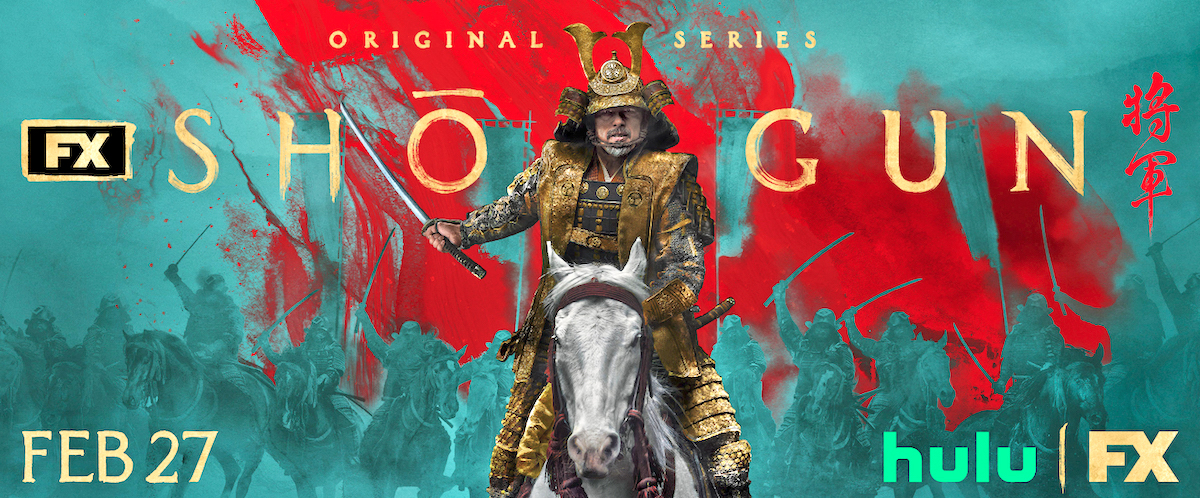The 21st century version of “Shōgun” arrives Feb. 27 on cable service FX and streaming service Hulu.
The reimagined take on James Clavell’s classic novel is a cut above expectations.
By George Toshio Johnston, Senior Editor
Note: The following may contain spoilers for those unfamiliar with the now-nearly 49-year-old novel upon which FX’s “Shōgun” is based.
Going way back to when Christopher Columbus sailed from Europe to find “the Japans” (we all know how that ended up) and looking over the centuries-long rise and fall pattern of Western fascination with anything having a Japanese pedigree, it appears that we are again in a time of rising interest in things from the land of the rising sun.
Anime. Manga. Cosplay. Video games. Ramen. Marie Kondo. Shohei Ohtani. The boxoffice successes of “The Boy and the Heron” and “Godzilla Minus One,” with each getting Oscar noms. Even Japanese American Day of Remembrance commemorations are getting covered by mainstream news outfits.
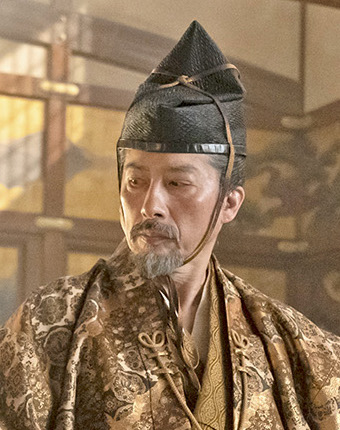
Hiroyuki Sanada as Yoshii Toranaga in Shōgun Episode 1, Anjin Photo Courtesy of FX Networks
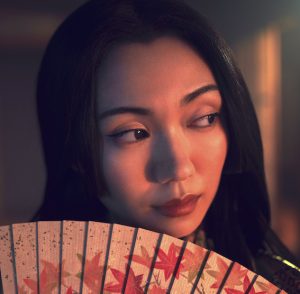
Fumi Mikado as Ochiba no Kata (Photo Courtesy of FX Networks)
It’s fitting, then, that beginning Feb. 27 on Disney-owned FX Networks and streaming service Hulu comes the 10-part 21st-century East-West jidaigeki of author James Clavell’s bestselling 1975 novel “Shōgun.”
The first two hourlong episodes arrive Feb. 27. After that, episodes will be released on a weekly basis until April 23, so no Netflix-style binging is possible, at least initially. As the buzz for “Shōgun” grows, Disney no doubt hopes for a spike in Hulu subscriptions.
And for parents who think it’s OK to watch with the kids, here is the one-word answer: No. For those who care, “Shōgun” is rated TV-MA, which means it is for adults and unsuitable for people under the age of 18. (Same could be true for some sensitive 40 year olds because of its graphic violence, explicit sexual situations and crude language.)
Speaking of pedigrees, while the source material may be the same, this “Shōgun” is not the same as the 1980 miniseries of the same name. (BTW, the word miniseries has been supplanted by “limited series.”) To paraphrase the TV commercial catchphrase, “This ain’t your old man’s ‘Shōgun.’”
That’s not to say there aren’t similarities; both share the same source material, after all. Beheadings? Check. Acts of seppuku? Check. Intra-Catholic rivalry? Check. Inter-Christian rivalry? Check. Dutch and English vs. Portuguese and Spanish? Check. Japanese mistrust of Christianity? Check. Western imperialism? (See mistrust of Christianity.) Scheming and double-dealing? Check. Assassination attempts? Check. A shinobi (ninja) attack? Check. Honorable as well as ignoble deaths? Check. Betrayals and unexpected reconciliations? Check. Intrigue? Check. Hidden agendas? Check.
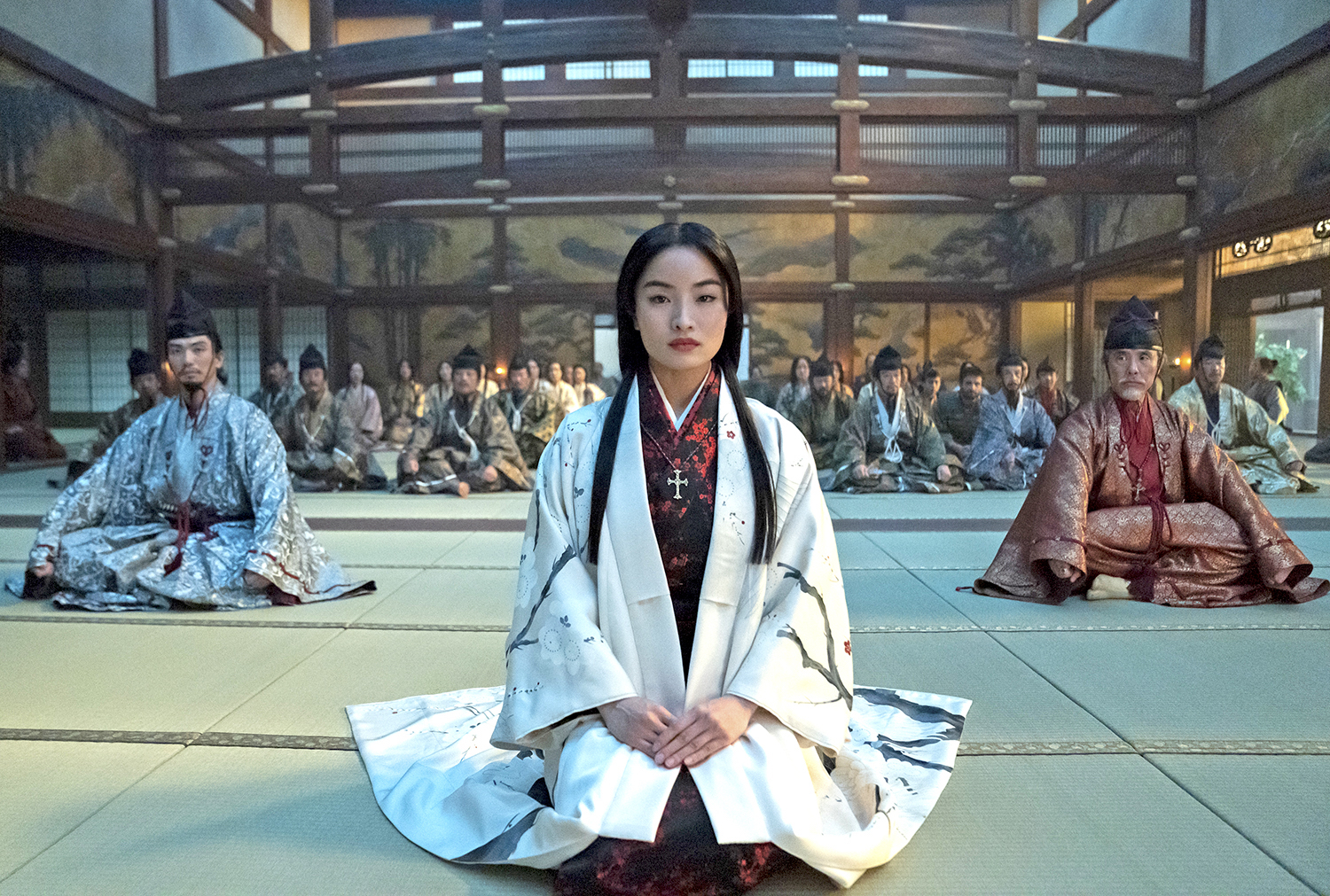
(From left) Eita Okuno as Saeki Nobutatsu, Anna Sawai as Toda Mariko and Hiromoto Ida as Kiyama Ukon Sadanaga (Photo: Courtesy of FX Networks)
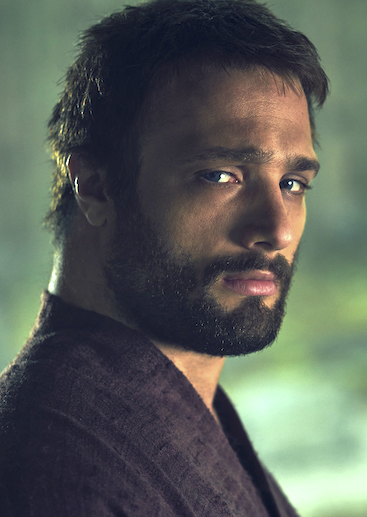
Cosmo Jarvis as John Blackthorne (Photo Courtesy of FX Networks)
What else is the same? Plotwise, “Shōgun” begins after the Dutch ship Erasmus and its barely alive crew drift into a Sengoku-era coastal village in Japan during a time of civil instability in the year 1600. Blackthorne still gets micturated upon by a samurai. He still gets imprisoned and befriended by another imprisoned Westerner, a Franciscan monk (put there by the Jesuits), who explains to Blackthorne (and the audience) the situation in which he has found himself. There’s the unpleasant pheasant incident. There’s the earthquake sequence, which benefits greatly from modern VFX. So, yes, all of that still happens.
That said, one major difference between the older version and today’s “Shōgun” are the times. Then, as now, the U.S. and Japan were regional security allies in the 1970s and ’80s — but economic tensions between the U.S. and Japan were sky high, exemplified by the rise of Japanese automakers and the decline of Detroit’s Big Four. Vincent Chin’s slaying didn’t happen in a vacuum.
In today’s environment, though, “Shōgun” has the potential to provide tsunami-levels of interest in Japanese culture. And when it comes time for awards recognitions, don’t be surprised if “Shōgun” reaches “Game of Thrones” and “Succession” levels of acclaim.
Since the new “Shōgun” isn’t broadcast over the public airwaves, it also isn’t bound by network TV standards and practices circa 1980 — and is therefore thematically heavier, bloodier, kinkier, crazier, fiercer and graver. Again, it’s not your old man’s “Shōgun.”
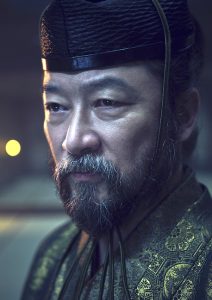
Tadanobu Asano as Kashigi Yabushige (Photo: Courtesy of FX Networks)
Bottom line: All renditions of “Shōgun” are works of fiction, in spite of having been inspired by historical events. The character Toranaga Yoshii, who is of the Minowara line (a stand-in for the surname Matsudaira), is a stand-in for Tokugawa Ieyasu, and Englishman John Blackthorne, aka “Anjin,” doubles for Englishman William Adams. So, yes, in this story there are events that parallel the historical record — but at its heart, it’s a work of fiction that was inspired by history but is not actual history, something the rekishi police need to keep in mind.
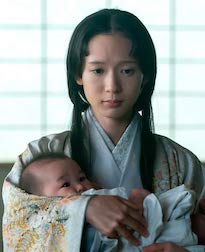
Moeka Hoshi as Usami Fuji (Photo Courtesy of FX Networks)
Yet, in spite of being a work of fiction, the 2024 “Shōgun” nevertheless presents a new, compelling reinterpretation of an important period of Japanese history.
According to the accompanying podcast (a sign that we are in the 21st century), efforts were made to improve on Clavell’s classic in terms of authenticity wherever possible. With the exception of its most well-known characters, for instance, some figures now have names that differ from the book. The iconic Mariko character, however, retains her name, even though it could be argued that such a female name, though possible for the time, was unlikely.
That quest for authenticity can also be seen in the attention to detail in the sets and costumes, the latter of which are particularly sumptuous to the eye. Another clothing-related example of authenticity: It being the Sengoku period, the Japanese wear kosode, a precursor to the modern kimono. Also, the period word used for interpreter is tsūji in reference to Mariko, instead of the more modern tsūyaku.
On the topic of language, one important storytelling conceit needs to be pointed out. Although an Englishman, Blackthorne speaks fluent Portuguese. (Dutch, too, evidently.) So, when Mariko, who has learned Portuguese and Latin from the Jesuit Father Martin Alvito, is interpreting for Toranaga and Blackthorne, when she speaks in Japanese to Toranaga, it’s subtitled in English. But, when she and Blackthorne are conversing in English, they are “really” speaking in Portuguese.
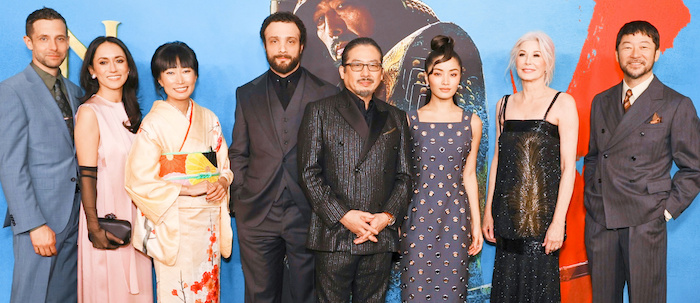
Justin Marks, Rachel Kondo, Eriko Miyagawa, Cosmo Jarvis, Hiroyuki Sanada, Anna Sawai, Michaela Clavell and Tadanobu Asano attend the red carpet premiere for FX’s “Shōgun.” (Photo:Frank Micelotta/PictureGroup for FX)
On the topic of subtitles, “Shōgun” also demands your attention in ways other shows might not; unless your understanding of spoken Japanese is so good that you can follow along by listening while doing the dishes, when the characters are speaking in Japanese, you have to read the subtitles to understand what’s going on. (This is where the aforementioned podcast comes in handy by providing supplemental information and context to what happened in the week’s latest episode.)
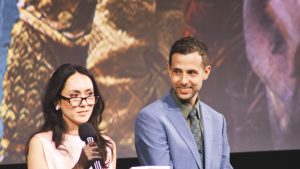
“Shōgun” Executive Producers Rachel Kondo and Justin Marks (Photo: George Toshio Johnston)
If there is one character in particular whose persona gets a major reworking in this “Shōgun,” it’s that of Mariko, sublimely portrayed by Anna Sawai. Her sadness, grace, anger and inner fire are palpable, her faith rock solid. She is also proficient with the naginata, on deadly display in a tense, penultimate Episode Nine. By the end of the series, one realizes that Mariko-Sama — aka Toda Mariko, aka Lady Maria, aka Akechi Mariko — is the tale’s key character, whose actions prove to be the pivot point for everything that follows for Toranaga and Blackthorne.
Distaff viewers of a certain age, meantime, may miss a particular blow-dried, feathered-locked actor who first played Anjin when Cosmo Jarvis is introduced as the pilot John Blackthorne. He looks and acts like a barbarian, which is how he is viewed by the Japanese. But as the series progresses, Jarvis’ Blackthorne grows on the viewer. By the end of the series, Jarvis inhabits the role. He is Anjin, full stop.
And then there’s Hiroyuki Sanada, attempting to do what might seem a fool’s errand: playing a role that was portrayed by a legend, Toshiro Mifune.
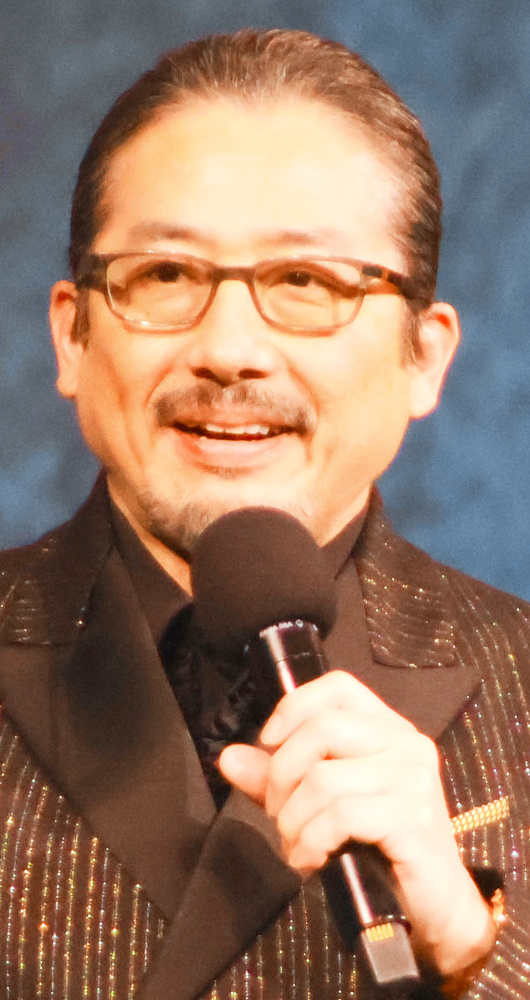
Hiroyuki Sanada at the Academy Museum’s Feb. 13 red carpet premiere for FX’s “Shōgun.” (Photo: George Toshio Johnston)
But Sanada, who is also a producer for “Shōgun,” is up to the task. His Toranaga is dour, grave, humorless, stoic and stern. He wields authority like it was his birthright. He is always, always thinking. He has a distaste for unnecessary violence that only one who meted out death on too many occasions can possess — and yet he is willing to go there in an instant when he must.
In a refreshing sign of the progress that has occurred in the 40-plus years since Orson Welles served as the narrator for the 1980 version, this “Shōgun” actually has some Japanese American/Asian American talent behind the scenes, thanks to such writers as Rachel Kondo, Shannon Goss and Emily Yoshida.
The Maui-born Kondo — a Michener Center for Writers grad — also serves as an executive producer, co-creator and writer for “Shōgun.” Her husband, Justin Marks, is also an executive producer (born in 1980, the same year that the other “Shōgun” aired) and may be best-known before this for a co-story credit on “Top Gun: Maverick.”
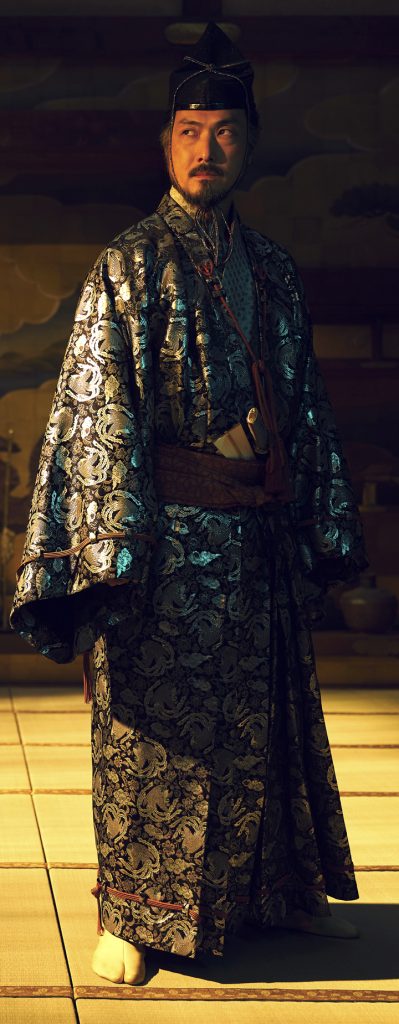
“SHŌGUN” — Pictured: Takehiro Hira as Ishido Kazunari. CR: Kurt Iswarienko/FX
Meantime, another executive producer with a vested interest in making sure “Shōgun” was done right is Michaela Clavell, daughter of the late James Clavell.
If there is any knock one might have for “Shōgun,” it might be that it is, all in all, very serious, without much in the way of comic relief to counterbalance all the tension and the life-and-death situations. The closest thing that comes to mind is when Blackthorne insists on trying natto, despite Mariko’s insistence against it. Turns out he likes it, comparing it to cheese. It’s kind of funny if you know anything about natto.
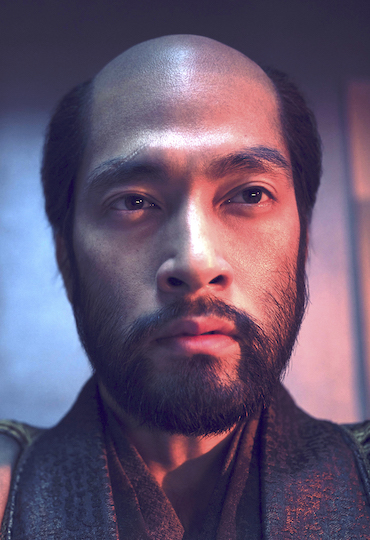
Shinnosuke Abe as Buntaro (Photo: Courtesy of FX Networks)
In any story that has a great lead, there needs to be a great opponent. In “Shōgun,” there are many, not the least of which are the four other “council of regents,” with Toranaga being the fifth. Leading the other four to destroy Toranaga is Ishido Kazunari, played by Takehiro Hira. Born a peasant, Ishido has risen to become a member of the five regents named by the deceased Taikō. His ambition is to become shōgun — and he realizes that the one obstacle to that title is Toranaga, who claims to not want it.
Other compelling characters include the conniving, corrupt and two-faced, yet oddly charming Kashigi Yabushige, played by Tadanobu Asano, and the fierce warrior Buntaro, Mariko’s cruel husband, aka Toda Hirokatsu, played by Shinnosuke Abe.
Although it lasts for 10 episodes, it doesn’t take that long to figure out that “Shōgun” is an entertaining, compelling, multilayered masterpiece for the ages — and will remain so until someone else decides to update “Shōgun” yet again in 40 years.
To view trailers for “Shōgun,” visit tinyurl.com/ye28573w and tinyurl.com/ymn5fjmj.
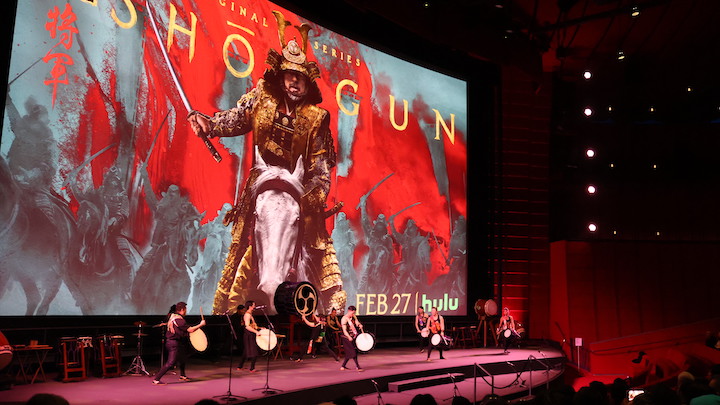
Taiko performers at Academy Theater screening (Photo: George Toshio Johnston)

